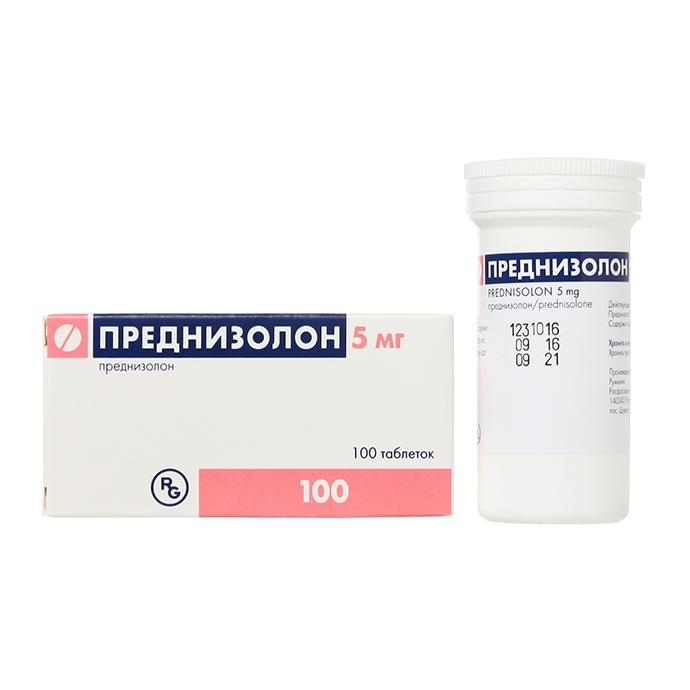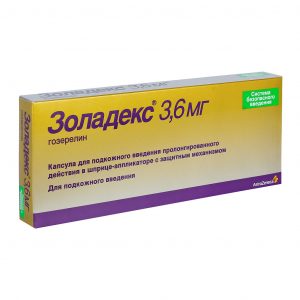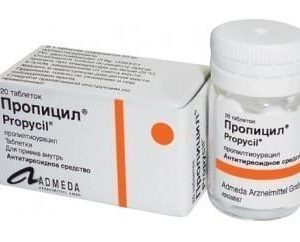Description
release form
tablets
Packing
100 pcs
Pharmacological action
Prednisone – glucocorticoid, anti-allergic, anti-inflammatory.
Pharmacodynamics
Synthetic corticosteroids with a pronounced anti-inflammatory effect (action of 5 mg of prednisolone is equivalent to 4 mg of methylprednisolone, 4 mg of triamcinolone, 0.75 mg of dexamethasone, 0.6 mg of betamethasone, 20 mg of hydrocortisone). Its mineralocorticoid effect accounts for about 60% of the activity of hydrocortisone. It inhibits the development of symptoms of inflammation. Inhibits the accumulation of macrophages, white blood cells and other cells in the area of inflammation. It inhibits phagocytosis, the release of lysosomal enzymes, as well as the synthesis and release of inflammatory mediators. Causes a decrease in capillary permeability, inhibition of white blood cell migration. It enhances the synthesis of lipomodulin, an phospholipase A2 inhibitor that releases arachidonic acid from phospholipid membranes, while inhibiting its synthesis.
Immunosuppressive effect. The mechanism is not fully understood. Prednisolone is known to reduce the number of T-lymphocytes, monocytes and acidophilic granulocytes. Reduces the binding of immunoglobulins to receptors on the cell surface and inhibits the synthesis or release of interleukins by reducing the blastogenesis of T-lymphocytes and reducing the early immunological response. It inhibits the penetration of immunological complexes through membranes and reduces the concentration of components, complement and immunoglobulins.
Effect on water-electrolyte balance. It acts on the distal part of the renal tubules, enhancing the reverse absorption of sodium and water, as well as increasing the excretion of potassium and hydrogen ions.
Other effects. It inhibits the secretion of ACTH by the pituitary gland, which leads to a decrease in the production of corticosteroids and androgens by the adrenal cortex. After prolonged use of large doses, adrenal function can recover within about a year, and in some patients there is a persistent suppression of their function.
Enhances protein catabolism and induces enzymes involved in amino acid metabolism. It inhibits the synthesis and enhances protein catabolism in the lymphatic, connective, muscle and skin tissue. With prolonged use, atrophy of these tissues may develop.
Increases blood glucose concentration by inducing gluconeogenesis enzymes in the liver, stimulating protein catabolism (which increases the number of amino acids for gluconeogenesis) and reducing glucose uptake in peripheral tissues. This leads to the accumulation of glycogen in the liver, an increase in the concentration of glucose in the blood and an increase in insulin resistance. Enhances lipolysis and mobilizes fatty acids from adipose tissue, which increases the concentration of fatty acids in serum. With prolonged treatment, redistribution of adipose tissue is possible. It inhibits the formation of bone tissue and enhances its resorption, reducing the concentration of calcium in the blood serum, which leads to secondary hyperfunction of the parathyroid glands, simultaneous stimulation of osteoclasts and inhibition of osteoblasts. These effects, together with a secondary decrease in the amount of protein components as a result of protein catabolism, can lead to inhibition of bone growth in children and adolescents and the development of osteoporosis in patients of all ages.
Enhances the action of endo- and exogenous catecholamines.
Pharmacokinetics
After oral administration, bioavailability is 70 90%. Serum Cmax is reached within 1 2 hours after administration. Food slows down the absorption of prednisone in the initial phase, but does not affect the overall bioavailability of the drug. Binding to serum proteins is 90 95%. It is metabolized mainly in the liver, to a lesser extent – in the kidneys. It is excreted in the urine in the form of inactive metabolites, in a small amount – unchanged. T1 / 2 from blood serum is 2.1 3.5 hours, from tissues – 18 36 hours. The duration of the drug is 1.25-1.5 days. Passes through the placental barrier, less than 1% of the dose passes into breast milk.
Indications for
endocrine diseases: primary adrenal cortex insufficiency (Addison’s disease) and secondary, acute adrenal cortex insufficiency, adrenogenital syndrome (congenital, adrenal cortical dysfunction), before surgery and in severe illnesses and injuries in patients with acute renal failure
severe allergic diseases resistant to other methods of treatment: contact and atopic dermatitis, serum sickness, hypersensitivity reactions to drugs, persistent or seasonal allergic rhinitis, anaphylactic reactions, angioedema
rheumatic diseases: rheumatoid arthritis, juvenile rheumatoid arthritis with resistance to other treatments, psoriatic arthritis, ankylosing spondylitis, rheumatic fever, acute non-rheumatic myocarditis, dermatomyositis, systemic lupus erythematosus, mesarteritis granulomatous giant cell, with stemnaya scleroderma, polyarteritis nodosa, relapsing polychondritis, polymyalgia rheumatica, Horton’s disease, systemic vasculitis
dermatological diseases: exfoliative heavy and seborrheic dermatitis, bullous dermatitis herpetiformis, severe erythema multiforme (Stevens-Johnson syndrome), fungal mycosis, pemphigus, severe psoriasis, severe eczema, pemphigoid
hematological diseases: acquired autoimmune hemolytic anemia, congenital aplastic anemia, idiopathic thrombocytopenic purpura (Verlhof’s disease) in adults, cerebral hemorrhoid hemoplastic anemia liver diseases: alcoholic hepatitis with encephalopathy, chronic active hepatitis
hypercalcemia in malignant neoplasms or sarco dose
inflammatory joint diseases: acute and subacute bursitis, epicondylitis, acute tendonitis, post-traumatic osteoarthritis
oncological diseases: acute and chronic leukemias, lymphomas, breast cancer, multiple myeloma, prostate cancer
neurological diseases: tuberculous meningitis with subarachnoid block, multiple sclerosis during exacerbation, myasthenia gravis
eye diseases (severe acute and chronic allergic and inflammatory processes): sluggish anterior and posterior uveitis, optic neuritis, spermatic eye disease respiratory organs: bronchial asthma, berylliosis, Leffler’s syndrome, symptomatic sarcoidosis, fulminant or disseminated pulmonary tuberculosis (in combination with tivotuberkuleznoy chemotherapy), chronic pulmonary emphysema (resistant to treatment aminophylline or beta-agonists)
transplantation of organs and tissues for the prevention and treatment of transplant rejection in combination with other immunosuppressive drugs.
Contraindications
Hypersensitivity to prednisone and other systemic fungal infections.
Use during pregnancy and lactation
During pregnancy (especially in the first trimester), it is used only for health reasons. With prolonged therapy during pregnancy, the possibility of impaired fetal growth is not ruled out. If used in the third trimester of pregnancy, there is a risk of atrophy of the adrenal cortex in the fetus, which may require replacement therapy in the newborn.
Since corticosteroids pass into breast milk, if it is necessary to use the drug during breastfeeding, breastfeeding is recommended to be discontinued.
Composition
1 tablet contains:
Active ingredient:
prednisone 5 mg
Excipients:
lactose
potato starch
gelatin
magnesium stearate
Dosage and administration
Inside, it is recommended to take it once a day, in the morning, if necessary, a more frequent intake is possible. The dose is set individually depending on the indications, the effectiveness of therapy and the patient’s condition. After achieving a therapeutic effect, a gradual reduction in dose to the minimum effective is recommended.
Average recommended doses: for adults – 5-60 mg / day, maximum daily dose – 200 mg. With multiple sclerosis during the exacerbation period, 200 mg / day for 7 days, then 80 mg / day for 1 month.
For children – 0.14 2 mg / kg / day in 3 4 doses.
If you skip a dose, you should take the drug as soon as possible, but if the time for the next dose is approaching, then you will not take the missed dose. Do not take a double dose.
Side effects of the
From the endocrine system: decreased glucose tolerance, steroid diabetes mellitus or manifestation of latent diabetes mellitus, inhibition of adrenal function, Itsenko-Cushing’s syndrome (moon-shaped face, pituitary-type obesity, hirsutism increased blood pressure, dysmenorrhea, amenorrhea, muscle weakness, striae), delayed sexual development in children.
From the digestive system: nausea, vomiting, pancreatitis, steroid ulcer of the stomach and duodenum, erosive esophagitis, gastrointestinal bleeding and perforation of the wall of the gastrointestinal tract, increased or decreased appetite, digestion, flatulence, hiccups. In rare cases, an increase in the activity of hepatic transaminases and alkaline phosphatase.
From the cardiovascular system: arrhythmias, bradycardia (up to cardiac arrest) development (in predisposed patients) or increased severity of heart failure, changes in the electrocardiogram characteristic of hypokalemia, increased blood pressure, hypercoagulation, thrombosis. In patients with acute and subacute myocardial infarction – the spread of the focus of necrosis, slowing the formation of scar tissue, which can lead to rupture of the heart muscle.
From the nervous system: delirium, disorientation, euphoria, hallucinations, manic-depressive psychosis, depression, paranoia, increased intracranial pressure, nervousness or anxiety, insomnia, dizziness, vertigo, cerebellar pseudotumor, headache, cramps.
From the sensory organs: posterior subcapsular cataract, increased intraocular pressure with possible damage to the optic nerve, a tendency to develop secondary bacterial, fungal or viral infections of the eyes, trophic changes in the cornea, exophthalmos, sudden loss of vision (with parenteral administration in the head, neck, nasal concha, scalp deposits of crystals of the drug in the vessels of the eye).
From the side of metabolism: increased excretion of calcium, hypocalcemia, increased body weight, negative nitrogen balance (increased protein breakdown), increased sweating.
Caused by mineralocorticoid activity: fluid and sodium retention (peripheral edema), hypernatremia, hypokalemic syndrome (hypokalemia, arrhythmia, myalgia or muscle spasm, unusual weakness and fatigue).
From the side of the musculoskeletal system: growth retardation and ossification processes in children (premature closure of the pineal gland), osteoporosis (very rarely pathological bone fractures, aseptic necrosis of the head of the humerus and femur), rupture of tendons of the muscles, steroid myopathy, decreased muscle masses (atrophy).
From the skin and mucous membranes: delayed healing of wounds, petechiae, ecchymosis, thinning of the skin, hyper- or hypopigmentation, steroid acne, striae, a tendency to develop pyoderma and candidiasis.
Allergic reactions: skin rash, itching, anaphylactic shock, local allergic reactions.
Local for parenteral administration: burning, numbness, pain, tingling at the injection site, infection at the injection site, rarely – necrosis of surrounding tissues, scarring at the injection site, atrophy of the skin and subcutaneous tissue with i / m administration (introduction into the deltoid muscle is especially dangerous )
Other: the development or exacerbation of infections (the combined immunosuppressants and vaccination contribute to this side effect), leukocyturia, withdrawal syndrome.
Drug Interaction
Cardiac Glycosides: increased risk of cardiac arrhythmias and glycoside toxicity associated with hypokalemia.
Barbiturates, antiepileptic drugs (phenytoin, carbamazepine), rifampicin, glutethimide accelerate the metabolism of GCS (by induction of microsomal enzymes), attenuate their action.
Antihistamines weaken the action of prednisolone.
Amphotericin B, carbonic anhydrase inhibitors: hypokalemia, left ventricular myocardial hypertrophy, circulatory insufficiency.
Paracetamol: hypernatremia, peripheral edema, increased calcium excretion, risk of hypocalcemia and osteoporosis. Increased risk of hepatotoxicity of paracetamol.
Anabolic steroids, androgens: increase the risk of developing peripheral edema, use acne with caution, especially in the case of liver and heart disease.
Oral contraceptives containing estrogens: increase in concentration of globulins binding glucocorticosteroids in serum, slowing of metabolism, increase of T1 / 2, increase of action of prednisolone.
Cholinergic drugs (mainly atropine) – increase in intraocular pressure.
Anticoagulants (coumarin derivatives, indandion, heparin), streptokinase, urokinase: reduction, and in some patients the increase in the efficacy of the dose should be determined on the basis of PV increasing the risk of ulceration and bleeding from the gastrointestinal tract.
Tricyclic antidepressants can increase the mental disorders associated with prednisolone intake. They should not be prescribed to treat these disorders.
Oral antidiabetic drugs, insulin: hypoglycemic action, increase in blood glucose concentration. Dose adjustment for anti-diabetic drugs is possible.
Antithyroid drugs, thyroid hormones – change in thyroid function (dose adjustment of these drugs or discontinuation of their administration is possible).
Diuretics: attenuation of diuretics (potassium-sparing), hypokalemia.
Laxatives: attenuation, hypokalemia.
Ephedrine can accelerate the metabolism of ACS (prednisolone dose adjustment is possible).
Immunosuppressive drugs: increased risk of infection, lymphoma and other lymphoproliferative diseases.
Isoniazid: decreased plasma isoniazid concentration, mainly in individuals with rapid acetylation (dose change is possible).
Mexiletine: acceleration of metabolism of mexiletine and decrease in its concentration in serum.
Drugs that block neuromuscular conduction (depolarizing muscle relaxants): Hypocalcaemia associated with the use of prednisolone may increase the blockage of synapses, leading to an increase in the duration of neuromuscular blockade.
NSAIDs, acetylsalicylic acid, alcohol: attenuation, increased risk of peptic ulcer disease and gastrointestinal bleeding.
Sodium-containing preparations and foods: peripheral edema, arterial hypertension (it may be necessary to reduce the intake of sodium from foods and high-sodium medicines, sometimes with the use of ACS requiring additional sodium administration).
Vaccines containing live viruses: during the use of immunosuppressive doses of ACS, replication of viruses and the development of viral diseases may reduce the production of antibodies (simultaneous use is not recommended).
Other vaccines: increased risk of neurological complications and decreased antibody production.
Folic acid: increasing the need for this drug.
Overdose
The risk of overdose is increased with prolonged use of prednisolone, especially in large doses.
Symptoms: increased blood pressure, peripheral edema, increased side effects described above.
Treatment: The drug should be temporarily stopped or the dose reduced.
Treatment: The drug should be temporarily stopped or the dose reduced.
Storage conditions
At temperatures below 25 ° C.
Expiration
2 years.
Deystvuyuschee substances
prednisone
Terms of pharmacy leave
Prescription
dosage form
Dosage form
tablets
Gedeon Richter Vengriya




